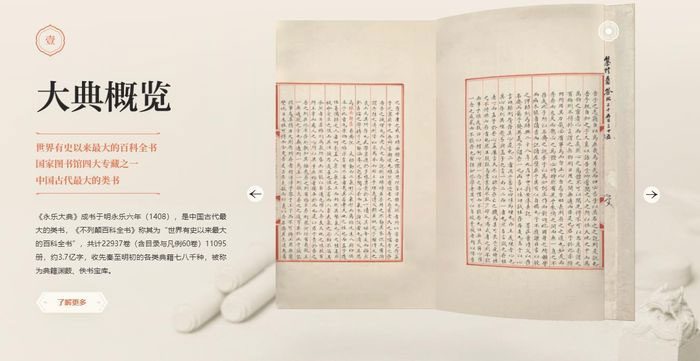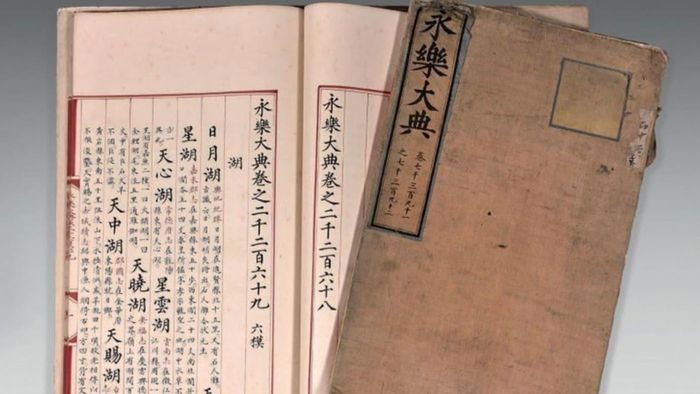“Yongle Encyclopedia” – the largest encyclopedia in the world – has just been digitized to preserve its remaining parts and make classical literature accessible to the public.
According to China Daily, the content of 1,800 books from the Yongle Encyclopedia collection at the National Library of China was digitized and widely published to the public at the end of February.

The Yongle Encyclopedia employs three-dimensional restoration technology to vividly display the binding and layout of the book collection.
The Yongle Encyclopedia was commissioned by Emperor Yongle in 1403 and compiled over 7,000 types of ancient Chinese books and records, covering literature, art, history, geography, philosophy, and religion from the pre-Qin period (before 221 BC) to the early Ming dynasty (1368-1644).
With a total of 11,095 volumes and approximately 370 million characters, the Yongle Encyclopedia is praised by Encyclopedia Britannica as the “largest encyclopedia in the world.” In an effort to protect this world-famous collection, Emperor Jiajing of the Ming dynasty ordered a transcription of this classic work. The transcription process took five years to complete.
Despite careful preservation, the hand-copied books have gradually been lost throughout history. Today, only about 400 volumes and a few parts of the Yongle Encyclopedia remain in the world, which is less than 4% of the original book collection.
In a July 2020 auction organized by Beaussant Lefèvre, two rare volumes from the Yongle Encyclopedia sold for over 9 million USD, a price 1,000 times higher than the estimated value, highlighting the extreme rarity and high value of the remaining pieces.

Two volumes of the Yongle Encyclopedia sold at auction in July 2020. (Photo: Beaussant Lefèvre).
Using advanced technology, China has intensified efforts to bring classical literature back to daily life. In 2022, the Chinese government issued a set of guidelines, promising greater efforts to digitize ancient books and encouraging libraries and archives to open their collections and digital resources to the public.
The Yongle Canon HD image database was announced by the National Library of China in Beijing last February. The public and researchers can access it for free to reference this great ancient encyclopedia. The database was developed in collaboration between the National Library of China Press and the Digital Humanities Research Center at Peking University.
According to Wei Chong, director of the National Library of China Press, based on high-resolution images, the database employs GIS techniques and three-dimensional restoration methods to vividly display the binding, layout of the book collection, and the locations of surviving volumes worldwide.
Similarly, other rare book collections from China, such as the Complete Library of the Four Treasuries, are also being digitized to preserve these valuable copies.
“Digital transformation is a trend of the era. Ancient books will be integrated with other cultural transmission media in the digital space, allowing the public to understand the overall picture of traditional culture through various digital forms,” said Liang Jihong, Director of Digital Humanities Research and Education at Renmin University of China.


















































